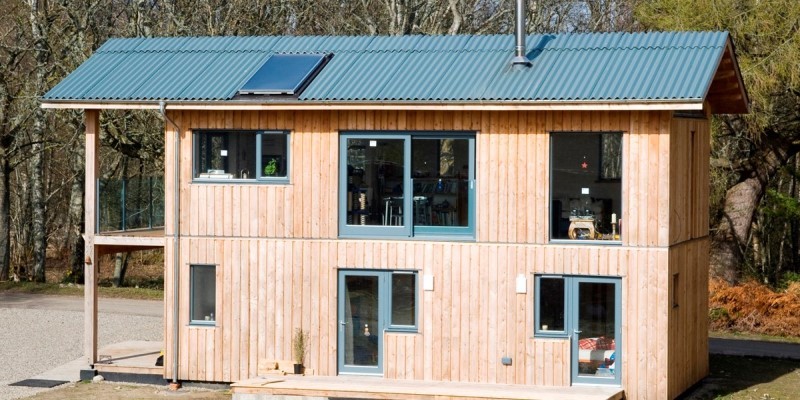Roofing Sheets Buyer's Guide
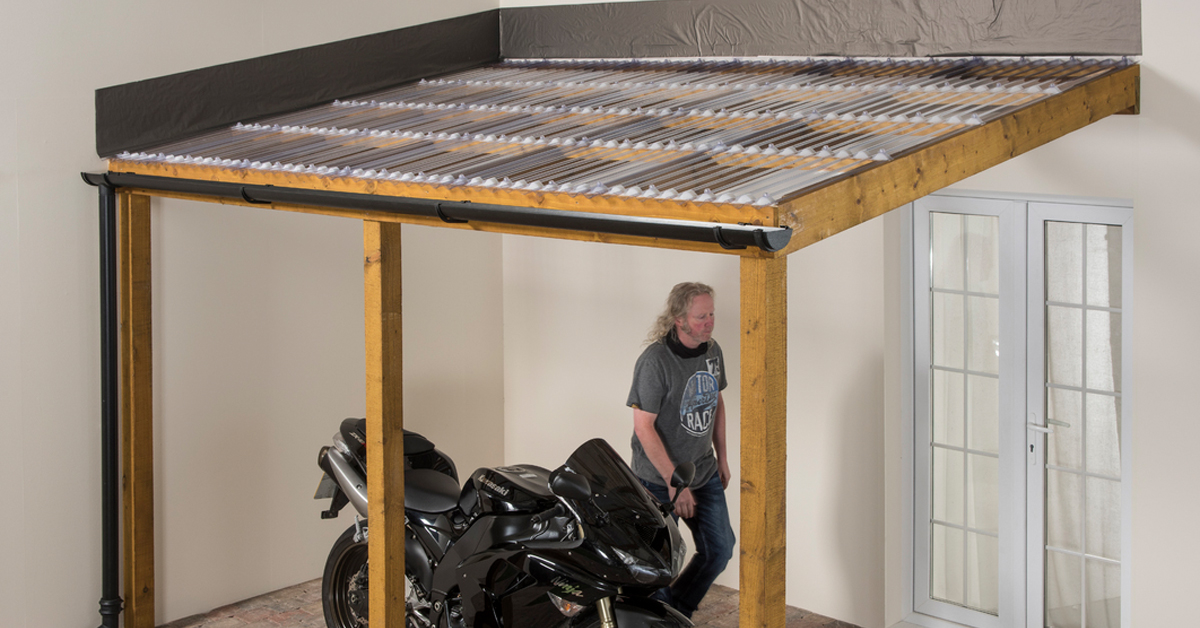
Roofing sheets have become incredibly popular for use on a wide range of different structures. This is thanks to their quick and easy installation, considerable durability, and the selection of attractive styles on offer.
However, it can be difficult to decide on the best roofing sheet for you, especially if you’re a beginner looking to start their first project. While roofing sheets all share a number of qualities, there are some unique differences to each that make them better suited to different projects.
This buyer’s guide is going to look at the four most popular types of roofing sheet, metal, polycarbonate, bitumen, and fibre cement. We’ll give you a quick rundown on each sheet, including lifespan, durability and more.
Metal Roofing Sheets
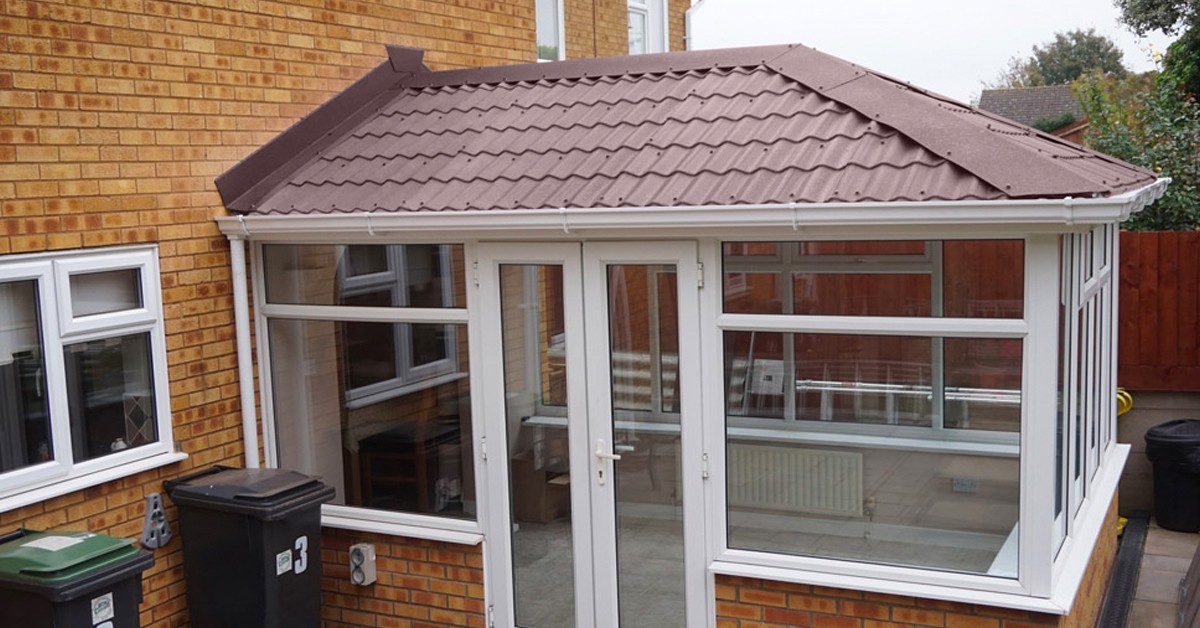
Metal roof sheets are the most durable of the four, and the most expensive. Our customers’ favourite metal sheet is the lightweight Corotile sheet in Charcoal. Boasting superb durability along with refined, muted aesthetics, it’s easy to see why.
Price – Metal roof sheets tend to be on the higher end of the price range, thanks in large part to their substantial durability and added security. While prices can vary between brands and different options, metal sheets are nevertheless very cost-effective when you consider their longer lifespan and incredible sturdiness.
Durability – One of the toughest forms of roofing available, metal roof sheets are extremely resistant to adverse weather, extreme temperatures, and impacts. Their heavy weight means they’re less likely to be moved out of place by strong winds, and their sturdier build means they are more able to support movement and foot traffic (though this will ultimately depend on the thickness of your sheet). They are, however, susceptible to scratches and may rust over time.
Installation – Metal sheets are simple to install, and the process can be carried out in just a few hours with a few basic tools. Unlike some other sheet types, you are less likely to need specifically made fixings for metal, though they do exist and can be highly effective. However, the weight of metal sheets may mean more people will be needed to help out with the process.
Visual Appeal – Metal sheeting can lend your roof a sleek, modern quality, or a rustic, traditional appearance depending on the colour and finish you choose. Galvanised steel is one of the most popular metals for roofing sheets, and will give your building a very clean, uniform appearance.
Lifespan – Metal is one of the longest-lasting roofing sheets, with lifespans of 25 years not at all uncommon. While it is prone to gradual wear over time like any roofing material, it remains extremely strong and reliable throughout its life.
Sustainability – Metal roofing’s exceptional lifespan makes it one of the longest-lasting options available. This means that homeowners will have to replace their roofs far less often than with other materials. Metal sheets also reflect up to 90% of the sun’s rays, keeping your home cooler and reducing the need for air conditioning. You’ll also be able to easily reuse or recycle your metal roofing at the end of its lifespan.
Great For – Metal sheets are ideal on storage buildings such as sheds and garages, as well as agricultural buildings and lean-tos. Due to the fact that they can serve as highly effective insulators, they are not the best choice for use on buildings that will see a lot of human use in the summer, as they tend to heat the interior of the building they are placed dramatically without the correct insulation measures.
Polycarbonate Roofing Sheets
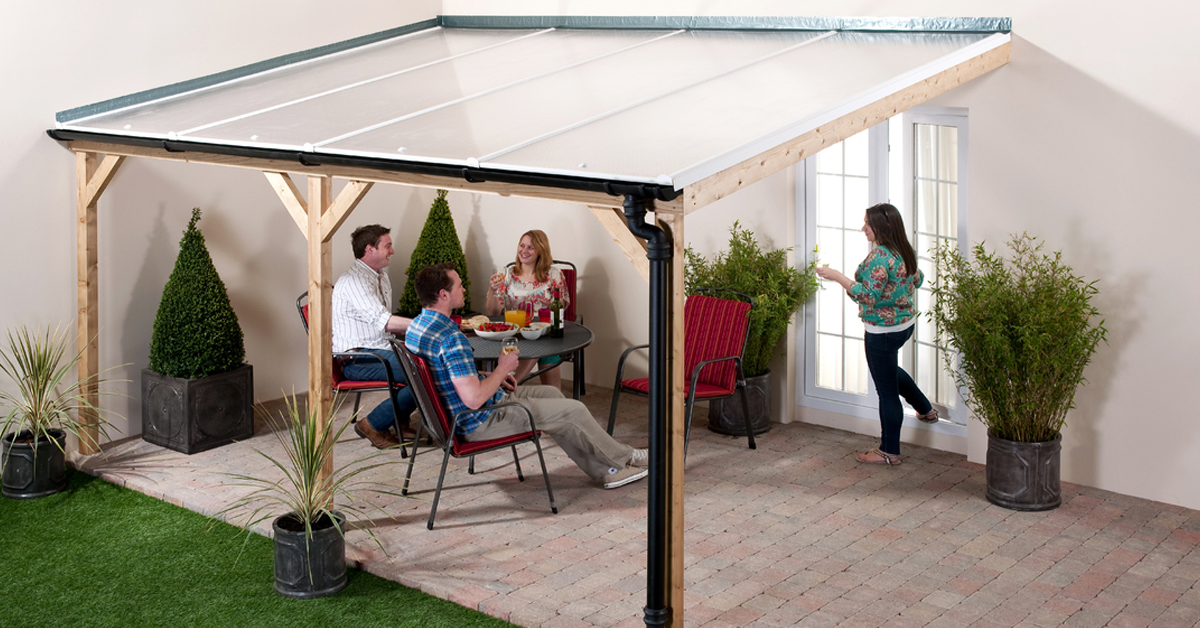
Polycarbonate roofing sheets are a popular, lightweight roofing option for garden buildings. By far the top choice in polycarbonate among our customers is the Corotherm sheet, available in three unique finishes in thicknesses from 4mm all the way up to 35mm.
Price – Polycarbonate sheets are by far the most cost-effective form of sheeted roofing on the market. What’s more, they are highly versatile, and can be used on builds of all shapes and sizes. The low price point also makes polycarbonate roof panels cheap to replace should there ever be a problem. Along with their lightweight and simple installation, polycarbonate is often seen as a great alternative to materials that may consume more time and money.
Durability – Despite the low price point, polycarbonate is also valued for its exceptional durability, with an impact resistance up to 200x greater than glass. What’s more, certain brands of polycarbonate can even resist bullets and explosions! Polycarbonate sheets are also more scratch proof than metal, and cannot be torn like bitumen.
However, polycarbonate does not age as well as the other materials. It is vulnerable to yellowing and clouding when exposed to sunlight and extreme temperatures, although this shouldn’t affect its durability.
Installation – Processes may vary depending on brand, size and your project, but polycarbonate sheets are generally simple to fit using specially made glazing bars and fixings from the manufacturer. This means the process is highly intuitive, requiring no further specialist tools or accessories. As you can order everything for your project bundled together, there’s no need to spend more time sourcing materials.
Visual Appeal – Polycarbonate sheeting isn’t generally chosen for its appearance, with low cost, easy fitting and physical performance being its main selling points. However, polycarbonate has recently grown in popularity as an alternative to glass. Polycarbonate sheets are available in a number of styles, including clear, blue or opal tints. Thicker sheets of polycarbonate are not available transparent, but still let in plenty of natural light, making rooms far brighter than they would be with bitumen or metal sheets.
Lifespan – Polycarbonate roofing sheets enjoy an excellent lifespan, often lasting over 25 years before needing replacing. While polycarbonate can lose its visual appeal over time, thanks to innovative manufacturing processes, its durability should stand the test of time and protect your property.
Sustainability – Polycarbonate is produced with minimal impact on the environment. What’s more, thanks to the large amount of natural light a polycarbonate roof lets in, homeowners are likely to use much less artificial light, saving on energy bills and their carbon footprint. Polycarbonate roof panels can also be recycled easily at the end of their lifespan.
Great For - Polycarbonate roofing sheets are one of the most versatile sheeting types on the market, with certain types and thicknesses being ideal for a plethora of different builds including sheds, garages, lean-tos, conservatories and much more. Some types of polycarbonate sheeting (specifically those without anti-sunray properties) can even be used on greenhouses, their impact-resistance and longevity making them a reliable and cost-effective alternative to glass panels.
Bitumen Roofing Sheets
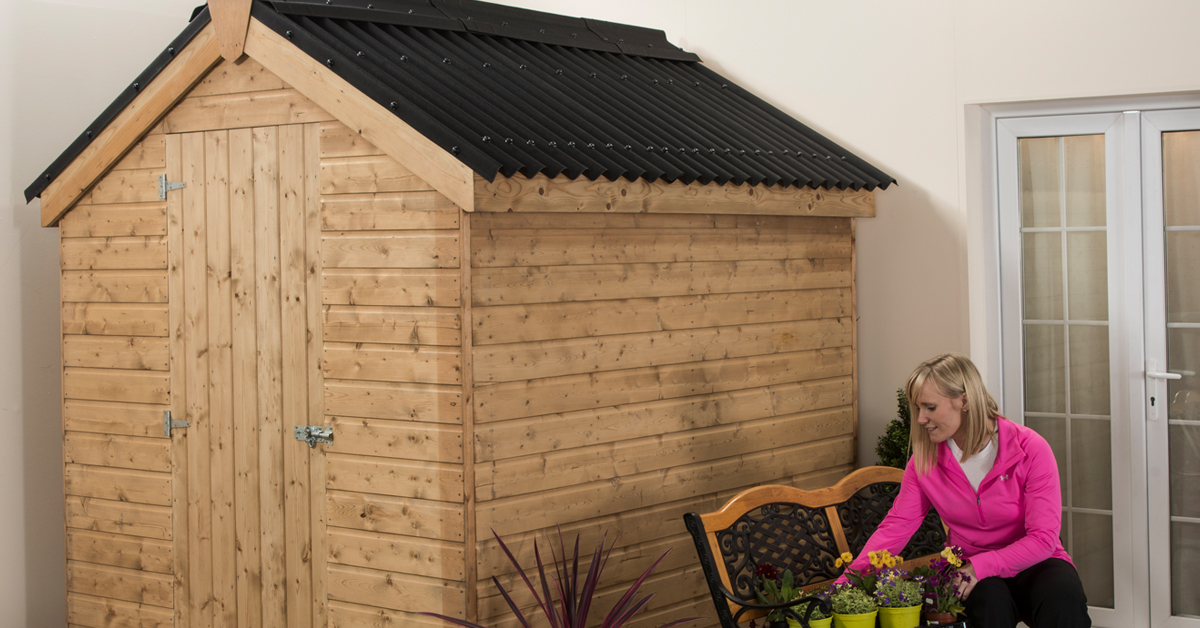
A true all-rounder, bitumen roofs combine moderate durability with ease of installation and superb aesthetics. The number one seller across our whole range, the Corrapol-BT bitumen roofing sheet in black is our leading bitumen sheet. Lightweight, versatile, and incredibly simple to install DIY.
Price – Bitumen roof sheets sit in the middle of metal and polycarbonate when it comes to price. Starting at just £5 per square meter, bitumen is highly cost-effective for its durability and lifespan. This is also why bitumen sheets are very popular on larger builds that still require some strength, as bitumen’s price per square meter is excellent value.
Durability – Bitumen is very durable, and unlike the other roofing sheet options can often look better as it weathers in the eyes of many. It can resist impacts fairly well, yet it is incredibly easy to cut to size. Bitumen is nearly always corrugated, which helps to resist impacts as well as easily shed water. Unlike the other two varieties however, bitumen is prone to “tearing”, particularly towards the end of its lifespan. However, thanks to its low cost and straightforward installation process, it can be fixed or replaced quickly and easily.
Installation – Installation of bitumen is fairly simple and straightforward. It can involve fixings and accessories exclusive to that particular sheeting but can also often be applied to your roof using simple tools and components. The process itself can be carried out in a few hours if preparation is carried out beforehand, and can often be carried out throughout the year, meaning any urgent replacements can be done even if the weather is not ideal.
Visual Appeal – Bitumen is popular up and down the country for its subtle, rustic appearance. It has a simple yet charming aesthetic that blends particularly well into countryside surroundings. The fact that green is one of the most popular bitumen sheet colours is further evidence of this, as is its prominent use on various farm buildings.
Lifespan – Bitumen can last for around 15-20 years before requiring replacement, an ideal timescale for storage buildings that may be required by one homeowner but not necessarily one who moves into the property at a later date.
Sustainability – One drawback of bitumen roofing sheets is their environmental impact. The manufacturing processes are ever improving but still have a greater carbon footprint than that of metal or polycarbonate. What’s more, bitumen roof sheets are also far more difficult to recycle or repurpose at the end of their lifespan.
Great For – Bitumen is the go-to roofing sheet choice for many agricultural builds, but it can also be used on sheds, garages and lean-tos. While still a very effective insulator, it is not effective as metal, and therefore better-suited for buildings that will get a lot of use in the summer. The rustic charm of bitumen also makes it ideal for farm buildings or homes in the countryside. Bitumen also tends to age very well, with many preferring its “weathered” look after a few years.
Fibre Cement Roofing Sheets
Fibre cement roofing sheets are highly durable, able to resist virtually everything that usually plagues roof coverings such as damp, mould, moss and rot. They’re available in both profile 3 and profile 6, and in a vast range of large sizes. Plus, these sheets can be expected to last for well over 50 years.
Price – Fibre cement sheets are in the middle of the price range, offering fantastic durability, longevity, and more for their cost. Fibre cement is by far the most cost-effective option when you balance initial investment, lifetime maintenance costs and longevity.
Durability – While not as resistant to direct impacts as metal roofing, fibre cement roof sheets still boast outstanding durability. Fibre cement roofing can resist extreme weather conditions such as rainstorms, heavy winds, and snow, along with both high and low temperatures, as well as issues such as moss or algae growth. Plus, thanks to cellulose fibres inserted in precise locations, these sheets are highly reinforced against splitting or cracking.
Installation – As with all roofing sheets, fibre cement sheets are rather simple to install, requiring no specialist tools or equipment. The only caveat we would add to fibre cement roofing is that the sheets can come in sizes so large that it’s recommended to have at least one other person helping you with the job. This will come in handy for moving the sheets on-site as well as securely positioning them.
Visual Appeal – Fibre cement roof sheets are favoured for agricultural buildings thanks to their performance and more practical qualities, however, it cannot be denied that they lend structures their own unique aesthetic. This makes them perfect for use on outbuildings such as garages, particularly when you want to achieve a more rural or industrial finish. They’re also available in a selection of twelve colours, ideal for finding the perfect sheet for you.
Lifespan – Fibre cement is by far the longest-lasting roofing sheet material, with a 50-year manufacturer’s guarantee, and a life expectancy that can stretch decades further. What’s more, these sheets will require very little upkeep across their very long lifespan.
Sustainability – Fibre cement is the most sustainable type of roofing sheet, requiring less energy to produce than any building material but timber. What’s more, these sheets are also highly breathable, improving internal air quality and preventing issues such as damp or condensation. This means there’s less of a need for internal air conditioning or other electronic systems. Their long life expectancy also means these sheets will not need to be replaced as often, further reducing their overall impact.
Great For – Fibre cement roofing sheets are most popular on agricultural buildings such as barns or stables. This is thanks to their exceptional performance, longevity, and low maintenance requirements, making them an ideal choice for busy farmers. However, they’re also a common sight on commercial premises (where they’re also used as cladding) as well as residential outbuildings such as garages, for many of the same reasons.
What Style of Roofing Sheet Is Right for Me?
Another important question to consider is what sort of profile your new sheeted roof should have. Most roofing sheets come in a corrugated profile, thanks to its superb strength, but there are other options to consider.
Corrugated Roofing Sheets
Corrugated roofing sheets are the most common type available. Two of our most popular corrugated sheets are the Galvanised roofing sheet which is both high in durability and cost-effective and the Vistalux roofing sheet which is incredibly strong but also lightweight which makes it easy to handle during installation of the sheet. Designed to maximise impact resistance, the “wavy” pattern effectively dissipates force across the entire sheet. Corrugated roofing is also highly resistant to adverse weather, allowing water and other debris to run-off easily.
Box Profile Roofing Sheets
Box profile roofing sheets are similar to corrugated sheets, in that they also features peaks and troughs in the design. However, where corrugations are round, the box profile is sharper and more square. While not quite as strong as undulating corrugated sheets, box profile sheets will lend your roof a far more industrial, modern appearance. Box profile sheets can also be used on wall cladding, which is a popular application on industrial or commercial buildings.
Tile Effect Roofing Sheets
Designed to mimic the traditional appearance of roof tiles, tile effect roofing sheets offer superb aesthetics with quick and easy installation. Generally made from metal, these sheets are popular on very large builds; as installing large sheets is much faster than many more individual tiles. Tile effect sheets also require much, much less maintenance over their 40-year lifespan than a tiled roof would.
Flat Roofing Sheets
Although not as popular as their corrugated counterparts, roofing sheets with a flat profile are rather popular. This is particularly true of solid polycarbonate, which is most often used as an alternative to panes of glass. Flat roofing sheets will lend your property a very clean, modern appearance.
In Conclusion...
We hope this guide has been helpful and you now have a much better idea of the sort of roofing sheets that will work best for you and your project. While polycarbonate is generally favoured for simple garden structures, bitumen may work best if you’re looking for a more traditional aesthetic. But if you’re looking for the greatest level of protection, metal sheets may be right for you.
If you’re still unsure, why not ask our award-winning customer service team? With over 40 years’ experience in all things DIY and roofing, they’re sure to be able to help you choose the right roofing sheets for you. Call them on 01295 565 565 or speak to them via the live chat on our website.
